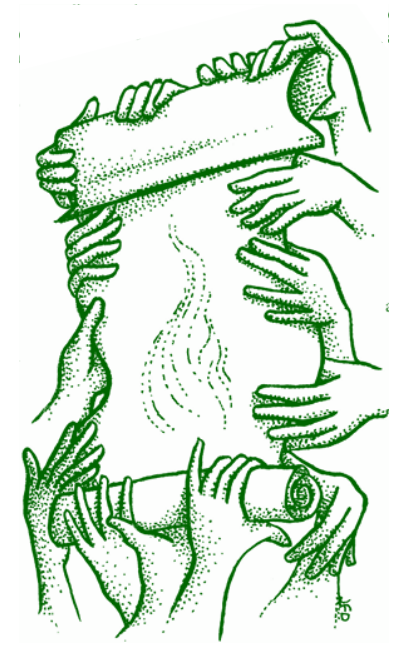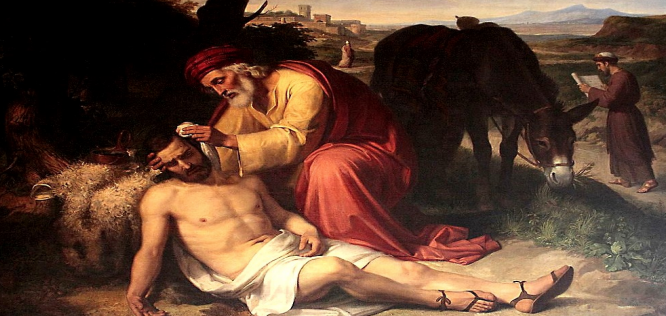










The parable of the Good Samaritan is a ‘shocking’ story, intended to make us think about alternatives in our relationships with God and one another. It is introduced with the lawyer’s determined effort to justify himself with regard to the two great commandments: love of God and love of neighbour. Self-justification is centred on ’I’ and ‘my:’ “What must I do to inherit eternal life?” he asks, and Jesus responds with two questions of his own: “What is written in the law? How do you read it?” The lawyer is quick to answer; he has all the right and holy words, can quote his source documents perfectly, and adopts the faultless theological stance of Deuteronomy 6:4-5 and Leviticus 19:17- 18. But Jesus urges him from right answering to right living: “Do this and you will live.”
But the lawyer continues to seek selfjustification rather than truth, responding: “And who is my neighbour?” Everything is in reference to himself. But discipleship does not start with myself, with asking whom I shall or shall not love or what are the boundaries of my responsibility. At the end of the parable, Jesus will ask the lawyer another question that banishes self from centre stage: “Which of these three, in your opinion, was neighbour to the robbers’ victim?” This is how our commitment to Jesus is to be defined: from the perspective of the half-dead, the fallen, the wounded, the abandoned ones, the person with whom every other character in the parable comes into either negative or positive contact.
After being ignored and avoided by the priest and the Levite, the abandoned man is approached, shockingly, by a Samaritan, a “corrupted” and despised Jew. The Samaritan is the one who did mercy. In the New Testament, ‘mercy’ is a remarkable verb; one does mercy. In Luke’s gospel, it is used only in reference to Jesus in this parable and that of the Prodigal Son. In Hebrew, ‘mercy’ derives from the word for ‘womb,’ and in Greek it has the sense of the gut feeling that embraces the situation of another. The implication of these gospel references is that we can be compassionate only in Jesus, who makes flesh the creating, sustaining, and birthing love of God. This is what the Samaritan does.
To go on to Jericho or back to Jerusalem to find lodging for himself and the half-dead traveller was a further act of the Samaritan’s brave compassion. Palestinian inns hardly offered five-star accommodation, especially if you arrived with a battered body slung over your donkey’s back! Jesus’ listeners might well imagine that the morning after the Samaritan’s vigil with the patient there could be a thankless awakening when the traveller found himself ministered to by a Samaritan. After all, how would we feel about being helped by someone whose sexual, racial, political, or social status we find extremely distasteful? And are we, ourselves, ready for the sometime thankless responses after long nights of ministry?









